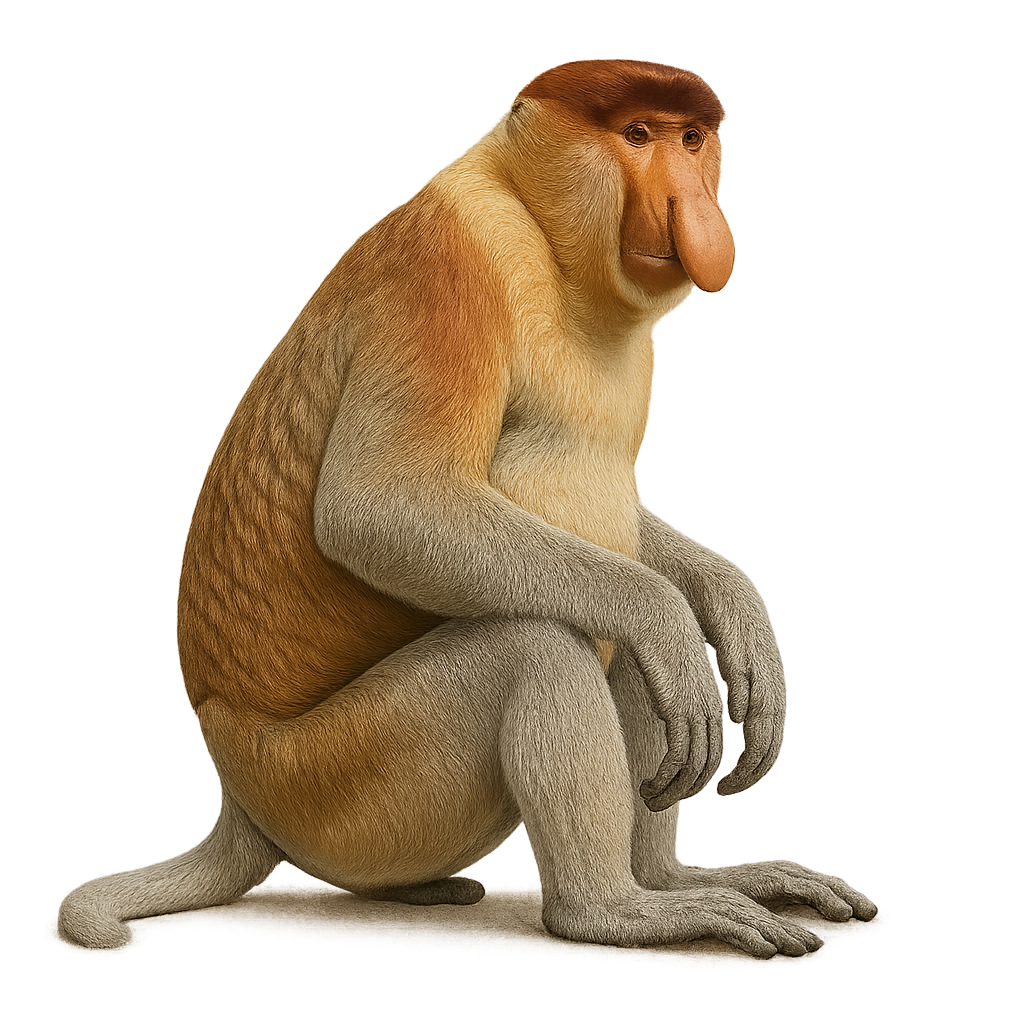Your wildlife photography guide.
Explore the proboscis monkey in detail, study its behavior, prepare your shots.
Where to observe and photograph the proboscis monkey in the wild
Learn where and when to spot the proboscis monkey in the wild, how to identify the species based on distinctive features, and what natural environments it inhabits. The WildlifePhotographer app offers tailored photography tips that reflect the proboscis monkey’s behavior, helping you capture better wildlife images. Explore the full species profile for key information including description, habitat, active periods, and approach techniques.
Proboscis monkey
Scientific name: Nasalis larvatus

IUCN Status: Endangered
Family: CERCOPITHECIDAE
Group: Mammals
Sensitivity to human approach: Suspicious
Minimum approach distance: 30 m
Rut period: December to January
Gestation: 165-200 jours
Births: June to July
Habitat:
Tropical swamp forests, mangroves, and riverbanks on the island of Borneo and in Malaysia
Activity period :
Primarily active during the day, with peak activity in the morning and late afternoon.
Identification and description:
The Proboscis Monkey is a large primate native to the tropical forests of Borneo and Sumatra. It measures about 60 to 75 cm in length and weighs between 15 and 25 kg. It is easily recognizable by its prominent, elongated nose, which can measure up to 10 cm in adult males. This nose is particularly developed in males and plays a role in vocalizations and attracting females. Its coat is generally brown or reddish, with a lighter belly. The Proboscis Monkey primarily inhabits mangroves, lowland forests, and mountain forests, where it feeds mainly on leaves, fruits, seeds, and roots. It is an excellent climber and spends much of its time in the trees, typically living in social groups consisting of several females and their young. While its population remains relatively stable, it faces threats such as deforestation, hunting, and habitat loss.
Recommended lens:
200 mm – adjust based on distance, desired framing (portrait or habitat), and approach conditions.
Photography tips:
Photographing the proboscis monkey can be challenging due to its dense habitat. Use a telephoto lens to capture its unique facial expressions and movements in the trees. Be patient and wait for the animal to approach an open viewpoint. The soft morning light is ideal for capturing beautiful photos without disturbing its natural behavior. Stay discreet and respect its safety distance.
The WildlifePhotographer App is coming soon!
Be the first to explore the best nature spots, track rutting seasons, log your observations, and observe more wildlife.
Already 1 430 wildlife lovers subscribed worldwide

